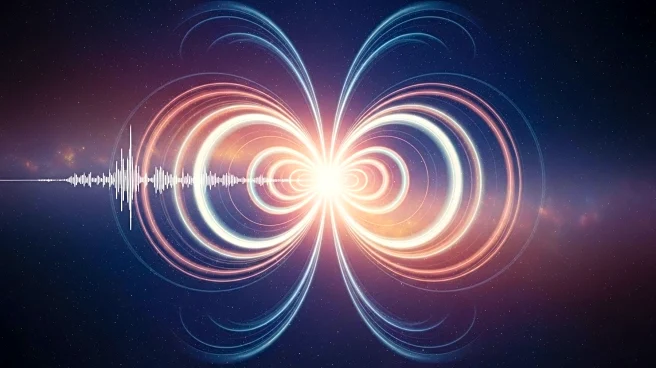What is the story about?
What's Happening?
Geoscientists have created an audio representation of Earth's magnetic field reversal, known as the Laschamps event, which occurred approximately 41,000 years ago. Using data from the European Space Agency's Swarm satellite mission, researchers combined magnetic field line movements with natural sounds to produce an eerie audio track. The Laschamps event involved a dramatic flip of Earth's magnetic field, weakening it to 5% of its current strength and allowing increased cosmic ray penetration. This event left isotopic signatures in ice and marine sediments, indicating higher solar bombardment levels during the reversal.
Why It's Important?
Understanding Earth's magnetic field reversals is crucial for predicting future geomagnetic events and their potential impacts on the environment and technology. The Laschamps event serves as a historical example of how such reversals can affect the planet, including increased radiation exposure and potential climate changes. By studying these phenomena, scientists can improve space climate predictions and assess risks to satellites and other technologies. The audio representation of the reversal offers a unique way to engage the public and raise awareness about the significance of geomagnetic research.
Beyond the Headlines
Recent anomalies in Earth's magnetic field, such as the South Atlantic anomaly, have raised questions about the possibility of an impending reversal. However, current research suggests these anomalies are not directly linked to flipping events. The Swarm satellite mission continues to monitor Earth's magnetic signals, providing valuable data for ongoing research. Understanding the dynamics of Earth's core and magnetic field is essential for assessing long-term environmental and technological impacts.
AI Generated Content
Do you find this article useful?














